What Is Self Adhesive Tape Made Of?
2021/01/12

Have you ever seen those rolls of tape that look like they’re just one big piece, but when you pull it off the roll, there are all these little pieces stuck together? You might have even used some of that tape yourself. But what is it made of and how does it work? Those are good questions! Keep reading to find out.
The Composition of Self Adhesive Tape
The backing plays an integral role in holding adhesive and primer in place. Depending on the application, the backing material, which is often soft and durable, can differ. The choice of backing – whether polymer films like PET, PI, PVC, or other materials such as foams, metal foils, Nomex paper, nonwovens, and fiberglass – depends on the specific requirements of your application. Foam tapes are excellent for sealing and shock absorption. In contrast, polyimide tape is known for its flame retardancy, and metal foil tapes offer features like conductive shielding. Additionally, transfer tapes, a unique type of tape without backing, sandwich the adhesive between two layers of release film.
The main types of adhesives are acrylic, silicone, rubber, and hot melt. According to different surface materials and application requirements, it is necessary to select tapes containing specific adhesives. Adhesives have two functions.
- Fixed backing material and adherend.
- Protect the surface from pollution or corrosion, to extend the use of time.
| Adhesive | Pros | Cons |
|---|---|---|
| Acrylic |
|
|
| Silicone |
|
|
| Rubber |
|
|
| Hot Melt |
|
|
The release liner is on the outermost layer of the tape, and its main purpose is to protect the adhesive and prevent the adhesive from accidentally sticking to the object or other parts of the tape. When using tape and non-carrier tape, it is necessary to peel off the release film to expose the adhesive layer to achieve double-sided bonding. The release liner is not sticky or slightly sticky after contact with other materials under limited conditions. Some tapes have no release liner, such as packing tape or duct tape.
The surface coating of the film has three purposes:
- Add new functions to the film, such as hardening or electrical conductivity.
- Protect the film and increase its durability.
- Decorate the film.
Single Sided Tape Structure
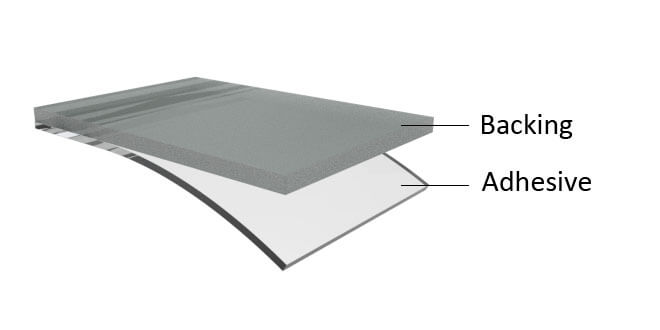
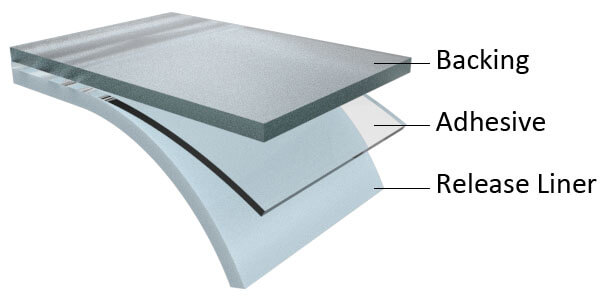
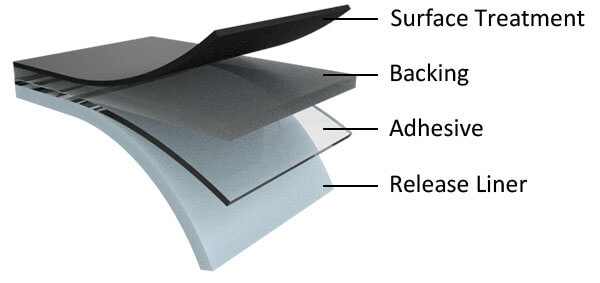
Double Sided Tape Structure
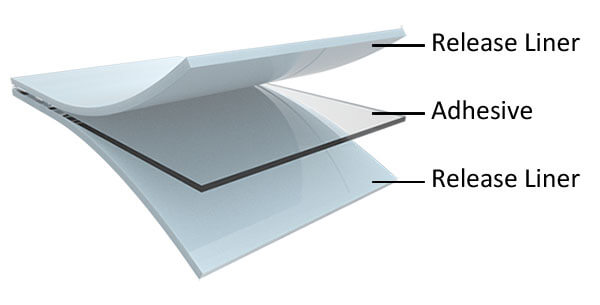
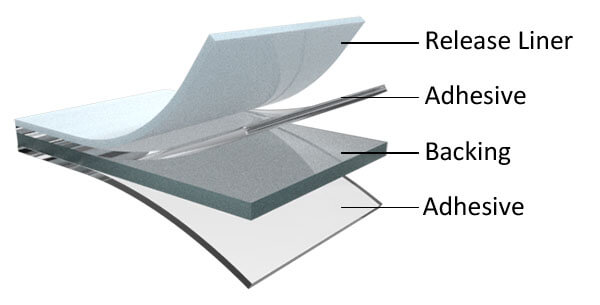

Category
